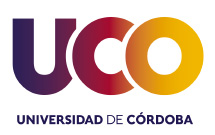DESCRIPTION
Holm oak (Quercus ilex) is the dominant tree species in natural forest ecosystems over large areas of the Western Mediterranean Basin.

Holm oak is a tree with an average height of 8 – 16 m aproximately, with a broad, dense and rounded crown, which can also be bushy. Its bark is grayish, cracked, young branches horizontal or erect, tomentose. The fruit is walnut type leathery (acorn), maturing the second year, and has a dome of 2 – 3 cm, variable in shape and size, which does not cover half the acorn, with flat flakes.
Holm oak acorns are a major component in the feeding systems of many Mediterranean wild and livestock species and, at the same time, they are the basic feed ingredient for domestically-bred pigs to obtain high quality meat.
Holm oak lives in well-drained soils on calcareous substrates, generally in coastal or sub-coastal zones of temperate and slightly humid Mediterranean climate.
In Spain, it is widely used for forest systems and forest practice conservation, covering a surface of 2,489,000 ha approximately, which present estimated values of over 120 million Euro in fruit acorn production per year.

Acorns, employed in ancient civilizations, mainly in Italy and Spain, as food or beverage, nowadays is far from being consumed as other common nuts.
IMPORTANCE
Holm oak is the principal tree of the Spanish agroforestery-pastoral ecosystem «Dehesa», whose fruit, the acorn, is the basic food of the famous «black hoof» pork.
Quercus spp. have been used in the construction of wine barrels, contributing to the organoleptic properties of the maturing wine.
The usage of acorns in human nutrition and for pharmaceutical purposes has a long history. As a nutritionally rich product, and because of its high nutraceutical value, the interest of integrating acorns in human diet or as functional food has been raised.
PROJECT HOLM-OAKMICS
The Agroforestry and Plant Biochemistry, Proteomics and Systems Biology research group of the University of Cordoba (Spain) aims at incorporating DNA molecular-markers and modern -omics (transcriptomics, proteomics and metabolomics) techniques to the study of population variability, development processes (maturation and germination of seeds) and response to stresses (drought and Phytophthora cinnamomi) in Holm oak (Quercus ilex).
Despite its environmental (predominant species of the Mediterranean-forest ecosystem) and economic interest (part of «dehesa»), the holm oak is an orphan species, with molecular studies almost absent.

The project has been structured into 7 objectives:
- Survey of twenty geographical locations all over Andalusia
- Studies of the variability of response to drought and Phytophthora cinnamomi among the 20 populations
- Analyses of population variability by using chloroplastic SSR markers (chloroplast microsatellites)
- Metabolomic analyses of acorns and leaves
- Proteomics and transcriptomics analyses of the response to drought and Phytophthora cinnamomi
- Proteomics analyses of seed maturation and germination
- Integration of the data and construction of a holm-oak database

This project was initiated 12 years ago by two research groups at the University of Cordoba: «Agroforestry and Plant Biochemistry, Proteomics and Systems Biology» and «Restoration of Agricultural and Forestry Areas». It incorporated the «Agrifood Biotechnology» one. These groups have experience and international prestige in the proposed topics and methodologies.
To date, our groups have made a major effort in developing molecular techniques to study the forest-tree biology, being species of great difficulty as experimental systems. Our research within this field has been very productive from scientific, translational and academic points of view, favoring the integration with international groups.


